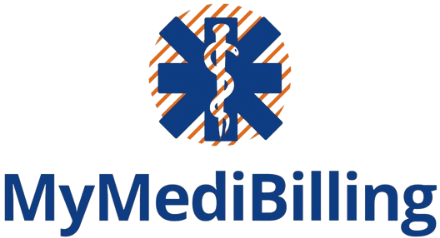Introduction
Medical billing is a critical component of the healthcare industry, ensuring that healthcare providers receive proper compensation for the services they render to patients. It involves the process of submitting and following up on claims with health insurance companies to receive payment for services provided. Understanding the basics of medical billing is essential for healthcare professionals to ensure a smooth and efficient revenue cycle management process.
This includes knowledge of medical coding, claim submission procedures, and reimbursement processes. Medical coding is a fundamental aspect of medical billing, as it involves translating medical diagnoses, procedures, and services into universal alphanumeric codes. These codes are used to accurately describe the services provided to patients and are essential for claim submission and reimbursement.
Additionally, understanding the various types of insurance plans, such as private insurance, Medicare, and Medicaid, is crucial for navigating the complexities of medical billing. Healthcare providers must also be familiar with the different types of billing forms, such as CMS-1500 and UB-04, and the specific requirements for each.
Key Takeaways
- Understanding the basics of medical billing is crucial for success in the healthcare industry.
- Essential documentation and coding guidelines are necessary for accurate and efficient billing.
- Navigating the insurance claim process requires attention to detail and thorough knowledge of the system.
- Best practices for managing patient accounts can improve the overall financial health of a medical practice.
- Compliance and regulatory considerations are important to avoid legal issues and maintain ethical billing practices.
Essential Documentation and Coding Guidelines
Accurate and thorough documentation is crucial for successful medical billing. Healthcare providers must ensure that all patient encounters are properly documented, including detailed information about the services provided, diagnoses, and treatment plans. Proper documentation not only supports the medical necessity of services but also ensures compliance with coding and billing guidelines.
Additionally, adherence to coding guidelines, such as those outlined by the International Classification of Diseases (ICD) and Current Procedural Terminology (CPT) code sets, is essential for accurate claim submission. Healthcare professionals must also stay updated on changes to coding and documentation guidelines to ensure compliance with industry standards. This includes understanding the latest updates to code sets, modifiers, and documentation requirements.
Proper documentation and adherence to coding guidelines not only facilitate accurate claim submission but also reduce the risk of claim denials and audits. By maintaining comprehensive and precise documentation, healthcare providers can optimize their revenue cycle and minimize potential billing errors.
Navigating the Insurance Claim Process
Navigating the insurance claim process is a critical aspect of medical billing success. Healthcare providers must understand the intricacies of submitting claims to various insurance companies and government payers. This includes verifying patient insurance coverage, submitting accurate and timely claims, and following up on claim status and payments.
Familiarity with electronic claim submission systems and clearinghouses is essential for streamlining the claims process and expediting reimbursement. Furthermore, understanding the appeals process for denied claims is crucial for maximizing revenue. In cases where claims are denied or underpaid, healthcare providers must be prepared to navigate the appeals process effectively.
This involves identifying the root cause of claim denials, providing additional documentation or clarification when necessary, and advocating for fair reimbursement from payers. By mastering the insurance claim process, healthcare providers can optimize their revenue cycle management and ensure timely payment for services rendered.
Best Practices for Managing Patient Accounts
| Best Practices for Managing Patient Accounts |
|---|
| 1. Timely and accurate billing |
| 2. Clear and transparent communication with patients regarding billing and payment options |
| 3. Regularly review and update patient account information |
| 4. Implementing efficient and secure payment processing systems |
| 5. Training staff on patient account management best practices |
Effective management of patient accounts is essential for maintaining a healthy revenue cycle. This includes establishing clear financial policies, verifying patient insurance information, and communicating transparently with patients regarding their financial responsibilities. Healthcare providers should implement efficient billing and collection processes to minimize accounts receivable aging and improve cash flow.
Additionally, offering flexible payment options and financial assistance programs can help patients manage their healthcare expenses while ensuring that providers receive timely payments. Utilizing technology such as electronic health record (EHR) systems and practice management software can streamline patient account management by automating billing processes and facilitating accurate patient billing statements. Furthermore, establishing clear communication channels with patients regarding their bills and payment options can improve patient satisfaction and reduce the likelihood of unpaid balances.
By implementing best practices for managing patient accounts, healthcare providers can enhance their financial performance while maintaining positive patient relationships.
Compliance and Regulatory Considerations

Compliance with healthcare regulations and industry standards is paramount in medical billing. Healthcare providers must adhere to federal and state regulations, as well as guidelines set forth by organizations such as the Centers for Medicare & Medicaid Services (CMS) and the Health Insurance Portability and Accountability Act (HIPAA). This includes safeguarding patient privacy and confidentiality, maintaining accurate billing records, and adhering to anti-fraud regulations.
Staying abreast of regulatory updates and changes is essential for ensuring compliance within the ever-evolving healthcare landscape. Healthcare providers should invest in ongoing staff training and education to ensure that all team members are well-versed in compliance requirements. Additionally, conducting regular internal audits can help identify potential compliance issues and mitigate risks before they escalate.
By prioritizing compliance and regulatory considerations, healthcare providers can safeguard their reputations, minimize legal risks, and maintain ethical billing practices.
Strategies for Maximizing Reimbursements
Maximizing reimbursements is a key objective in medical billing success. Healthcare providers can employ various strategies to optimize their revenue cycle and enhance reimbursement rates. This includes conducting thorough eligibility verification to ensure that services are covered by patients’ insurance plans before rendering care.
Additionally, leveraging technology such as revenue cycle management software can help identify opportunities for revenue optimization, such as undercoating or missed charge capture. Negotiating favorable contracts with payers and participating in value-based care initiatives can also contribute to maximizing reimbursements. By aligning with payers on mutually beneficial terms and demonstrating high-quality care outcomes, healthcare providers can negotiate better reimbursement rates and incentives.
Furthermore, implementing proactive denial management processes can help identify trends in claim denials and address root causes to prevent future revenue loss. By employing strategic approaches to maximize reimbursements, healthcare providers can enhance their financial performance and sustain long-term success.
Tips for Streamlining the Medical Billing Workflow
Streamlining the medical billing workflow is essential for optimizing efficiency and reducing administrative burdens. Healthcare providers can implement several tips to streamline their billing processes, such as standardizing documentation templates to ensure consistency in coding and billing practices. Automation of repetitive tasks through technology solutions can also expedite claim submission and reduce manual errors.
Furthermore, establishing clear communication channels within the billing team and across departments can facilitate seamless coordination in the revenue cycle management process. Regular performance monitoring and analysis can help identify bottlenecks or inefficiencies in the workflow, allowing for targeted improvements to enhance overall productivity. By embracing technology, standardization, and effective communication, healthcare providers can streamline their medical billing workflow and achieve greater operational efficiency.
Conclusion
Mastering the complete checklist for medical billing success requires a comprehensive understanding of the fundamentals of medical billing, adherence to documentation and coding guidelines, proficiency in navigating the insurance claim process, effective management of patient accounts, compliance with regulatory considerations, strategic approaches to maximize reimbursements, and tips for streamlining the medical billing workflow. By prioritizing these key areas, healthcare providers can optimize their revenue cycle management processes, minimize billing errors, enhance financial performance, and ultimately deliver high-quality care while maintaining a sustainable practice or facility.

